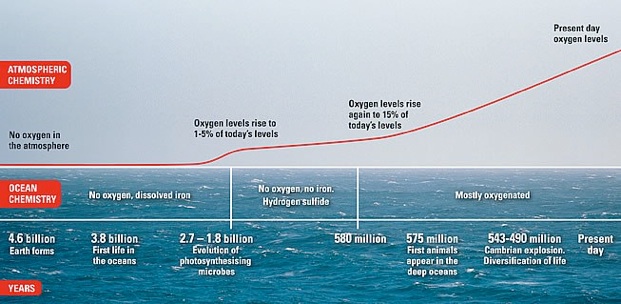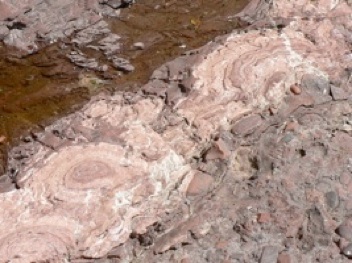Earth History


Fossils in the Jacobsville?
The Jacobsville Sandstone has no obvious fossils, but fossils are found in rocks that are older than the Jacobsville, including the Copper Harbor Conglomerate. Living organisms are known on Earth in rocks in Minnesota and northern Canada that are more than 3 billion years old, during the Archean. The time of the Jacobsville is a critical time for life on earth, because simple life forms in the ocean were living and their interchanges with earth’s oceans and atmosphere changed the conditions so that life could develop further. While we cannot see obvious fossils we can see their tracks and we can look for more critical evidence about their abundance and diversity.

Simple life forms were living and changing the Earth for a very long time so that more complicated organisms could develop and live.


Why is the Jacobsville red?
Why is it sometimes white?
The red is hematite, fine iron rich rust.
Cyanobacteria are microscopic and hard to see, unless they live in colonies like stromatolites. Their carbon rich residua may cause spots in the rock, however.

Cyanobacteria lived in the ocean, shielded from deadly ultraviolet rays from the sun which killed any organisms in the atmosphere or on the land surface. In the ocean the cyanobacteria took CO2 and H2O from the ocean and expelled O2, which eventually oxidized the water and began to build up oxygen in the atmosphere. With O2 in the atmosphere, earth finally developed an ozone shield for ultaviolet light. Then organisms could live on land. So the Proterozoic was the time when cyanobacteria were preparing Earth for diversity.



Cyanobacteria in the ocean was significant by 3.8 by ago, and this started the oxidation of iron there and raised the eH. This led to the formation of banded iron formations. Later, oxygen built up in earth’s atmosphere.





